
by Joel G. Robertson (and a whole lotta friends!)
For this pre-Thanksgiving (in the States anyway) Mall Twin Musing, I thought I’d ask several of my movie blogging, podcasting, and filmmaking friends to share with you what ONE forgotten flick they are most thankful for and why. The movie could be old or new, it just has to be a movie they believe deserves to be remembered or get more attention than it does.
And yes, I do realize what a ridiculously impossible and unfair thing that is to ask of any film fan.
But they were all up to the task and I got a wide-variety of well-thought out, personal responses. I received back so many great responses, in fact, that I’m breaking this into three segments. I’ll post the first segment today, segment two tomorrow, and we’ll wind it all up with segment three on Wednesday. Each post will feature the musings of several contributors, in no particular order (save how I received them, more or less).
So, here’s the first batch of movie-lovin’ gratitude from John, Phil, Max, Mark, and Dayton!
DVDGeeks.tv
by John Champion
Danger: Diabolik (1968)
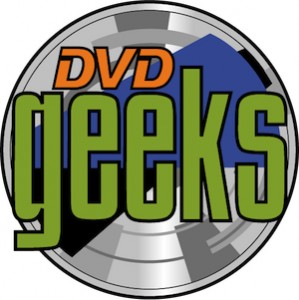 I’ll have to phrase my answer a couple of ways. Since we’re a DVD show it’s kind of unfair to choose a title that’s not on DVD as a favorite. In that case,
I’ll have to phrase my answer a couple of ways. Since we’re a DVD show it’s kind of unfair to choose a title that’s not on DVD as a favorite. In that case, 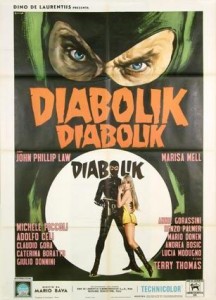 I’ll just have to mention that Hal Needham’s 1981 sci-fi action film Megaforce desperately needs a proper DVD release. I’m thankful for that as one of the all-time best-worst movies that is infinitely quotable and infinitely fun (at least if you were a nine-year-old boy in the early ’80s).
I’ll just have to mention that Hal Needham’s 1981 sci-fi action film Megaforce desperately needs a proper DVD release. I’m thankful for that as one of the all-time best-worst movies that is infinitely quotable and infinitely fun (at least if you were a nine-year-old boy in the early ’80s).
The “forgotten” DVD for which I am most thankful is Mario Bava’s 1968 Danger: Diabolik. It could have been relegated over the years simply to the film trash-bin via its skewering on MST3K, but the wise people at Paramount unearthed it and gave it the DVD treatment it deserved. It’s campy, over-the-top and simply gorgeous to look at. More than many recent “comic book” movies, this one stays true to its roots and allows Bava’s creative direction and Ennio Morricone’s psychedelic score to shine. Diabolik is the hero criminal – out for no one but himself and his insanely hot girlfriend. There’s no socially redeeming value to his actions, but we pull for him because he’s tall, good looking and has all the cool toys. It’s eye-candy in the long lineage of pop sci-fi fantasy like Barbarella all the way up to Flash Gordon.
Follow the DVD Geeks on Twitter!
LiveForFilms.com
by Phil Edwards
Yojimbo (1961)
![]() Akira Kurosawa’s Yojimbo – I always feel it gets overshadowed by the Seven Samurai when I feel Yojimbo is a much more enjoyable film. Gripping,
Akira Kurosawa’s Yojimbo – I always feel it gets overshadowed by the Seven Samurai when I feel Yojimbo is a much more enjoyable film. Gripping, 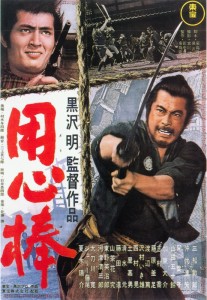 funny and so well made. Plus without it there would be no Clint Eastwood as the Man with No Name which means no The Good, The Bad and The Ugly.
funny and so well made. Plus without it there would be no Clint Eastwood as the Man with No Name which means no The Good, The Bad and The Ugly.
Mind you it also gave us the Bruce Willis film, Last Man Standing, which sucked all that was good out of Yojimbo and became a long winded boring mess.
Yojimbo. Classic Samurai action.
Follow Live For Films on Twitter!
Max On Movies
by Maxamillion Foizey
Young Sherlock Holmes (1985)
 “You are seated in a room with an all-southern view. Suddenly a bear walks past the window. What color is the bear?”
“You are seated in a room with an all-southern view. Suddenly a bear walks past the window. What color is the bear?”
In honor of Thanksgiving, Joel asked me to write about the ‘Forgotten Flick’ I’m most thankful for. He said he understood this was an unfair and almost impossible question to ask a film critic, but my choice was simple.
In 1985, Paramount Pictures released an Amblin Entertainment film that (mildy) rocked movie houses and set new standards for special effects; a film that lead to the birth of Pixar yet is all but forgotten today.
Steve Spielberg was a force of nature in 1985, arguably more so than today. The films he produced, such as The Goonies and Gremlins, were as popular as the films he directed and certainly made an impact on the 80’s film-going generation.
Of his 80’s produced films, none made more of an impact on me than Young Sherlock Holmes. Growing up I had five or six VHS tapes that my mother bought for me from a video store that was going out of business and this was one of them. I watched it every week, reciting dialogue and humming along with Bruce Broughton’s captivating score.
The film’s secret to success is the deliberate, even-handed style of director Barry Levinson. Looking at his filmography, he would not be an obvious choice for a genre film, but he elevates what could have been a hokey production to a classy one.
In the film, Holmes and Watson meet as schoolboys at a boarding school where we also meet a mentor of sorts for Holmes, the retired schoolmaster and batty inventor Rupert T. Waxflatter, along with his lovely daughter, Elizabeth.
Soon enough Holmes and Watson stumble upon a mystery involving a hallucinogen that causes victims to see things so frightening they are scared to death.
The hallucinations are presented with the aid of puppets, practical effects, and the very first fully computer generated character of all time (the stained-glass knight) which was created by none other than Lucasfilm’s John Lasseter, one year before George Lucas sold Pixar to Steve Jobs, and about ten years before Toy Story.
Like the best 80’s genre films aimed at young teens, the story of Young Sherlock Holmes is a dark one, perfect for the heyday of PG-13.
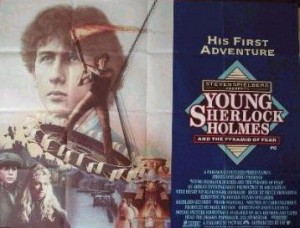 Our three lead actors are fantastic, with Nicholas Rowe doing an impressive job as Holmes, a young man slightly at odds with his contemporaries as he pursues the art of deduction. Alan Cox (son of Brian) steals the show as the young John Watson, not quite as bumbling as we are used to seeing, but still very much enamored with Holmes. Sophie Ward does a nice job as Elizabeth, the girl who is perhaps the most interesting creation of the film.
Our three lead actors are fantastic, with Nicholas Rowe doing an impressive job as Holmes, a young man slightly at odds with his contemporaries as he pursues the art of deduction. Alan Cox (son of Brian) steals the show as the young John Watson, not quite as bumbling as we are used to seeing, but still very much enamored with Holmes. Sophie Ward does a nice job as Elizabeth, the girl who is perhaps the most interesting creation of the film.
Upon release some Holmes scholars rejected the entire premise of the film as, according to canon, Holmes and Watson did not meet at a boarding school as young men. That may very well be the case, but those purists are missing out on a great alternate universe story.
Young Sherlock gave me a love and appreciation of all things Sherlockian and can even be viewed as a proper prequel to Guy Ritchie’s recent film starring Robert Downy Jr. and Jude Law.
One of the most interesting things about Young Sherlock Holmes is it was written by Chris Columbus, who went on to direct the first two Harry Potter films.
This is interesting when you look at the myriad of similarities between his original script for Young Sherlock and the Harry Potter Universe.
Watching the film it can be fun to spot the correlations, from the boarding school setting (a sort-of Hogwarts), the three leads (Holmes is Harry, Watson is Ron, Elizabeth is Hermione), the rival (Dudley, a snooty blonde boy much like Draco Malfoy,) and the teachers who are not to be entirely trusted.
J.K. Rowling has acknowledged she saw Young Sherlock at the cinema, yet I believe her Potter books were only informed by the film in an ephemeral way. Still, it’s worth noting the film was released in the U.K. under the title Young Sherlock Holmes and the Pyramid of Fear which does sound very Potter-ish, doesn’t it?
Quotable dialogue and a thrilling, unpredictable adventure make Young Sherlock Holmes a must-see that you’ll want to watch many times over. I know I have.
A member of the Broadcast Film Critics Association, Maxamillion Foizey hosts the award winning Max On Movies, every Saturday from 2-4pm on 97.1 FM Talk in Saint Louis, Missouri, and has appeared as guest critic on nationally syndicated radio shows. Follow Max on Twitter @MaxOnMovies.
TVOvermind.com
by Mark O. Estes
The Craft (1996)
 I’m going to have to go with the one movie that pops into my head at the moment, because it was one of the movies that came at a turning point in my life. 1996’s The Craft starring Fairuza Balk, Neve Campbell, Rachel True, and Robin Tunney as four outcasts who turn to witchcraft to get back at their tormentors at an elitist Catholic school. The movie spoke to me, because I was an outsider at the time and felt the girls’ pain in more ways than one. Each girl represented something I was going through at the moment and I was glad that the girls were getting back at their bullies, until, that is, things got deadly and ghastly for their victims.
I’m going to have to go with the one movie that pops into my head at the moment, because it was one of the movies that came at a turning point in my life. 1996’s The Craft starring Fairuza Balk, Neve Campbell, Rachel True, and Robin Tunney as four outcasts who turn to witchcraft to get back at their tormentors at an elitist Catholic school. The movie spoke to me, because I was an outsider at the time and felt the girls’ pain in more ways than one. Each girl represented something I was going through at the moment and I was glad that the girls were getting back at their bullies, until, that is, things got deadly and ghastly for their victims.
 As for the context or social commentary of the movie and how it should be remembered, I feel that The Craft touched on something that the John Hughes movies did back in the day as it went after the pretty committee, which was the popular movie crowd at the moment and still is today. The JH connection comes in at the outcast element of the movie as these anti-heroines tried to deal with the cards life dealt them, but the contrast begins when the means taken to cope got out of hand and the girls became no better than the people attacking them. In fact, it made them worse.
As for the context or social commentary of the movie and how it should be remembered, I feel that The Craft touched on something that the John Hughes movies did back in the day as it went after the pretty committee, which was the popular movie crowd at the moment and still is today. The JH connection comes in at the outcast element of the movie as these anti-heroines tried to deal with the cards life dealt them, but the contrast begins when the means taken to cope got out of hand and the girls became no better than the people attacking them. In fact, it made them worse.
Another aspect to look at is the concept of power and how it can corrupt the weakest of people who are not used to it. It’s like the film asked the non-popular teens what would they do with popularity if it was handed to them? I think the movie was possibly stuck in that tragic void of being before it’s time, but too late to the party at the same time, if that makes any sense.
Follow TV Overmind on Twitter!
Daytonward.com
by Dayton Ward
Smokey and the Bandit (1977)
 Let’s see: it’s Thanksgiving afternoon. You’ve stuffed yourselves like Romans, and you’re struggling against the onset of your annual tryptophan coma. The football is a snoozefest, and the only other game scheduled for the day is between two teams whose only chance of going to the Super Bowl is if they get hired to sell hot dogs. What do you do? Of course, you wander over to the DVD shelf, push past all the romantic comedies and Baby Einsteins and maybe even the three Star Wars movies.
Let’s see: it’s Thanksgiving afternoon. You’ve stuffed yourselves like Romans, and you’re struggling against the onset of your annual tryptophan coma. The football is a snoozefest, and the only other game scheduled for the day is between two teams whose only chance of going to the Super Bowl is if they get hired to sell hot dogs. What do you do? Of course, you wander over to the DVD shelf, push past all the romantic comedies and Baby Einsteins and maybe even the three Star Wars movies.
What? They made three more? Blasphemy, I say!
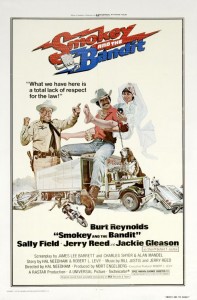 Anyway, you bend way down to the shelf near the floor, where “your” movies reside. Bruce Willis, Sly Stallone, Arnie, and maybe even Mel Gibson (before the meltdown) are represented, but who’s that? Burt Reynolds? Whoa. It looks like you’ve got a couple of his classics, but a single title stands out among all the others. It’s that one film of Burt’s which showcases the definitive battle between good and evil; that renders into sharp relief the intrinsic struggle between liberty and oppression, and offers hope that one man – along with a woman, another man and that man’s dog – can make a difference.
Anyway, you bend way down to the shelf near the floor, where “your” movies reside. Bruce Willis, Sly Stallone, Arnie, and maybe even Mel Gibson (before the meltdown) are represented, but who’s that? Burt Reynolds? Whoa. It looks like you’ve got a couple of his classics, but a single title stands out among all the others. It’s that one film of Burt’s which showcases the definitive battle between good and evil; that renders into sharp relief the intrinsic struggle between liberty and oppression, and offers hope that one man – along with a woman, another man and that man’s dog – can make a difference.
I refer, of course, to Smokey and the Bandit.
Okay, okay. At its core, this movie is little more than an excuse to film cars driving fast, jumping over things, and getting the crap beaten out of them. The plot is razor thin: Drive from Atlanta to Texarkana, obtain 400 cases of Coors beer – which at the time was not allowed to be sold east of the Mississippi River – and drive back in 28 hours, in order to secure an $80,000 payday. Along the way, Bo Darville (aka “the Bandit,” played by Reynolds) and Cletus Snow (“the Snowman,” as portrayed by Jerry Reed) run afoul of Texas lawman Buford T. Justice, a hilarious parody of every backwater redneck hick sheriff in the history of backwater redneck hick sheriffs and played to utter, sublime perfection by the late, great Jackie Gleason. Justice sets off in manic pursuit of the Bandit and his shiny black T-top Trans Am, and hilarity ensues…particularly when the Bandit stops just long enough to pick up a runaway bride (Carrie, aka “Frog,” played by Sally Field) who happens to be fleeing the scene after leaving Justice’s son, Junior, at the altar.
Got all that?
In and around all this heavy angst and intense character introspection (or lack thereof) are a series of high-speed chases, jumps and crashes, and trash-talking on the finest communications tool ever developed in the civilized world, the Citizen’s Band Radio. Meanwhile, Snowman, driving the rig with all the beer, is just hoping to get back in time to collect the cash. As if that’s not hard enough, he has to stop long enough to fight a motorcycle gang and hopefully get a decent cheeseburger for his dog, Fred, while waiting for his buddy the Bandit to show up, run blocker for the truck, and maybe help him avoid getting arrested. Written and directed by ace Hollywood stuntman Hal Needham, Smokey and the Bandit was to be the first of several collaborations with Reynolds, though none of them match the sheer goofy fun of this, the first and still the best duel ever between a Smokey and a Bandit.
Dayton’s Blog
Follow Dayton on Twitter!
Dayton’s Facebook Page
Joel here… be sure to tune in tomorrow when I’ll be posting the movies Dale (Dalelloyd.com), Ian (Fugitivedead.com), Jeremy (Microfilmmaker.com), Jona (Reelybored.com), and Kimster (Kimster-Thatswhatshesaid.com) are most thankful for and want you all to remember this holiday season!
But while we’re waiting, what forgotten flick are you most thankful for (this week anyway!)? Let me know in the comments section!
And until next time, remember, a flick is only forgotten if you’re not talking about it!